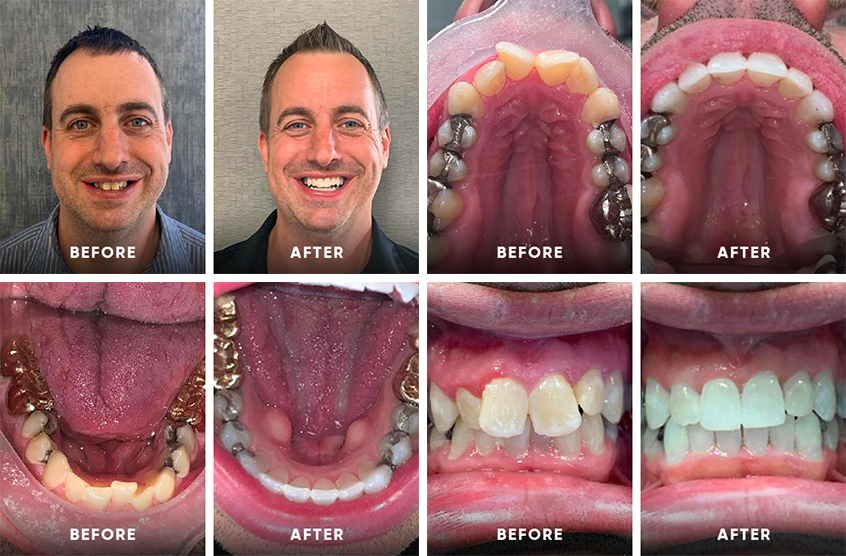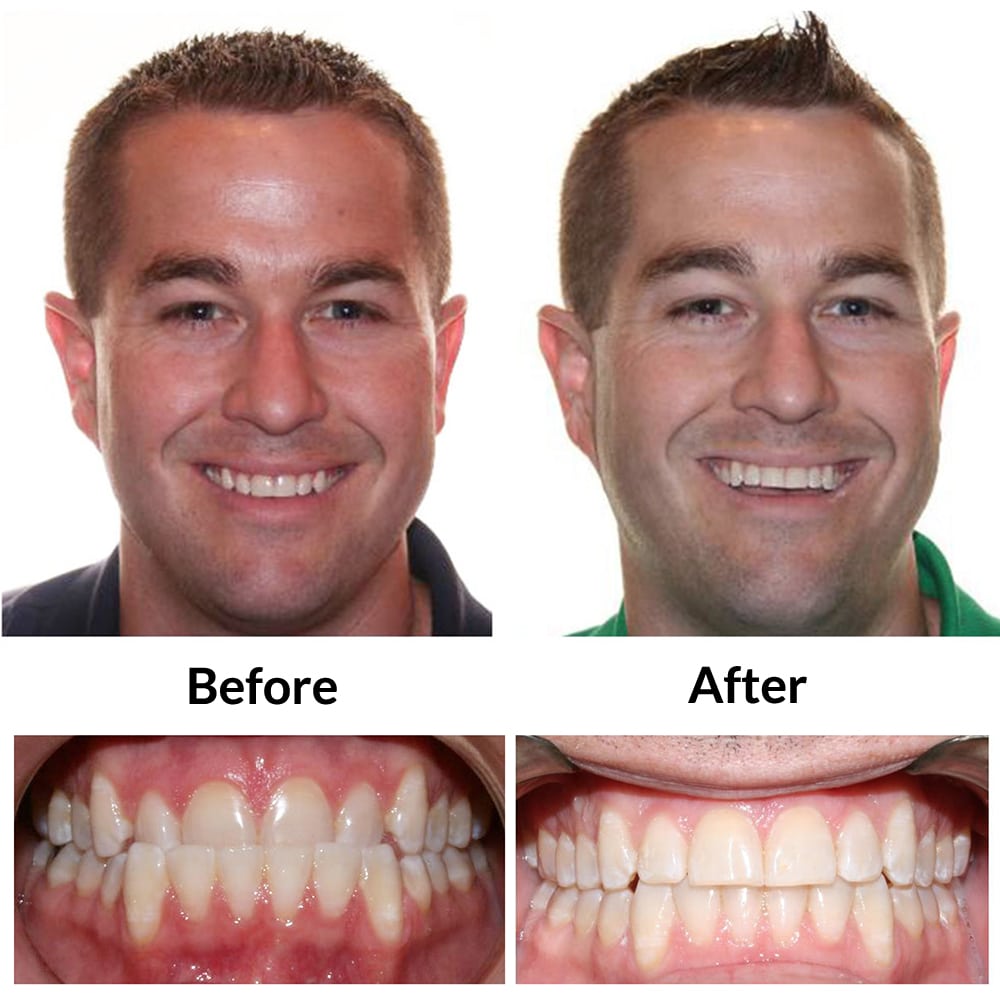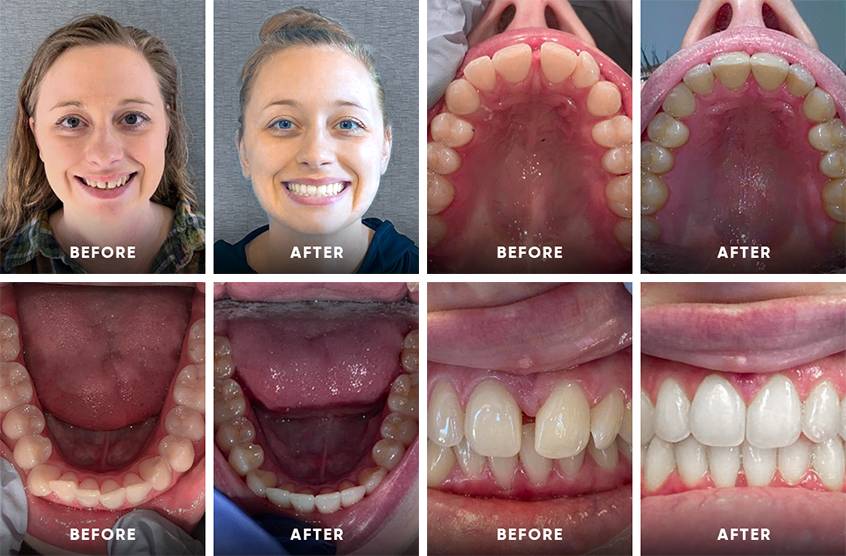Discover the Advantages of Invisalign for a Perfect Smile Improvement
Discover the Advantages of Invisalign for a Perfect Smile Improvement
Blog Article
Invisalign vs. Traditional Braces: Which Choice Is Right for You?
When considering orthodontic treatment, the selection between Invisalign and conventional dental braces offers a number of essential elements that warrant careful examination. Invisalign offers a discreet alternative with removable aligners, while standard braces supply a much more visible yet reliable option for extreme imbalance.
Summary of Treatment Options

On the other hand, traditional dental braces contain metal braces and cables that are adhered to the teeth. This technique applies constant stress with time to accomplish positioning. While reliable for intricate orthodontic problems, standard braces call for routine gos to for modifications and can present challenges in preserving dental hygiene because of the problem of cleansing about cables and braces.
Both alternatives have their benefits, and the choice frequently depends upon particular oral conditions, way of living choices, and individual compliance. Ultimately, consulting an orthodontic specialist is essential for determining the most appropriate therapy plan tailored to private requirements. Recognizing the nuances of each option can dramatically affect the total success of orthodontic treatment.
Visual Factors To Consider
A considerable aspect affecting the choice in between Invisalign and conventional dental braces is the visual appeal each treatment offers. Invisalign aligners are crafted from clear plastic, making them virtually unseen when used.
In contrast, typical dental braces include metal brackets and wires, which can be much more visible. While improvements in orthodontic modern technology have actually brought about the growth of smaller sized brackets and tinted elastics, conventional dental braces still maintain a more conspicuous profile. For some individuals, the exposure of dental braces may discourage them from seeking needed therapy.
Ultimately, the choice between Invisalign and typical braces may rest on personal preferences regarding aesthetic appeals. Individuals who prioritize discernment frequently favor Invisalign, while those who are much less concerned regarding exposure might choose traditional braces. Understanding the visual effects of each choice is crucial for making an educated choice that lines up with one's lifestyle and preferences.
Convenience and Convenience

In regards to comfort, Invisalign aligners are removable, enabling clients to appreciate their preferred foods without restriction and preserve ideal oral hygiene. Cleaning and flossing are streamlined, as the aligners can be taken out during these regimens, whereas traditional dental braces call for mindful steering around brackets and wires.
In contrast, traditional braces require regular adjustments, making them much less convenient for those with hectic schedules. Generally, the convenience and ease of Invisalign make it an appealing option for many people seeking orthodontic treatment.
Therapy Duration and Efficiency
While both Invisalign and standard braces work in correcting dental misalignments, the duration of therapy can vary substantially in between the 2 choices. Typically, Invisalign therapy can take anywhere from 12 to 18 months, relying on the intricacy of the case. The clear aligners work by gradually changing teeth into their desired placements, and normal follow-ups with an orthodontist help guarantee development remains on track.
In contrast, typical dental braces commonly call for a longer commitment, normally varying from 18 months to 3 years. This results from their fixed nature and using wires and braces, which can be much more effective for intricate instances and extreme misalignments (Invisalign). site The therapy effectiveness of typical braces is well-documented, as they permit specific adjustments and higher control over tooth activity
Eventually, the choice between Invisalign and typical braces might rest on both the anticipated treatment period and the certain oral issues handy. Consulting with an orthodontist is essential, as they can supply tailored recommendations based on private needs, making certain the selected method aligns with wanted durations and end results.
Cost Contrast and Insurance Coverage Choices
Cost plays a substantial role in the decision-making procedure for people taking into consideration orthodontic therapy, whether going with Invisalign or standard dental braces. On average, the cost of Invisalign varieties from $3,000 to $8,000, while conventional braces generally set you back between $2,000 and $6,000. Aspects affecting these costs consist of the complexity of the instance, the period of treatment, and geographical place.
Insurance insurance coverage can significantly impact additional info out-of-pocket expenditures. Lots of oral insurance coverage strategies give partial coverage for orthodontic therapies, yet the specifics can vary commonly. It is vital for people to assess their insurance coverage to figure out the extent of protection for either alternative. Typically, conventional braces might be a lot more frequently covered by insurance coverage strategies compared to Invisalign, which some insurers categorize as a cosmetic procedure.
Additionally, numerous orthodontic practices supply flexible layaway plan, making both treatment choices much more accessible. Individuals should inquire regarding possible financing alternatives and discounts for in advance repayments. Evaluating the complete expense, including insurance advantages and layaway plan, is essential for making a notified decision that straightens with both aesthetic preferences and budget plan considerations.

Verdict
In summary, the choice in between Invisalign and typical braces hinges on multiple variables, including aesthetic preferences, comfort, therapy period, and cost. Invisalign uses a very discreet, removable choice that helps with dental hygiene and dietary versatility, while traditional braces might be a lot more ideal for intricate oral concerns and typically come at a lower price point. Ultimately, appointment with an orthodontist is vital to analyze specific circumstances and identify the most suitable therapy option for achieving ideal dental alignment.
When considering orthodontic treatment, the selection between Invisalign and traditional dental braces offers several crucial aspects that merit cautious examination.Comparing Invisalign and standard dental braces exposes unique therapy alternatives for orthodontic adjustment.While both Invisalign and conventional dental braces are efficient in fixing oral misalignments, the duration of treatment can differ dramatically in between the two alternatives.Price plays a considerable role in the decision-making procedure for individuals thinking about orthodontic treatment, whether opting for Invisalign or traditional dental braces.In summary, the option in between Invisalign and traditional dental braces pivots on numerous elements, including visual choices, convenience, therapy duration, and cost.
Report this page